V-22: interesting, but in some places illogical
Is it easy to fly a V-22 Osprey tiltrotor? I think many would be interested in how such a thing generally stays in the air. But how to find out? It is unlikely that the US Marine Corps will be so kind as to allow foreign pilots from unfriendly countries to handle this machine.
Nevertheless, there is some opportunity to look at this miracle of technology through the eyes of the pilot. I managed to find an interesting work by Scott Trail, defended at the University of Tennessee in May 2006, in which he examined the peculiarities of piloting the V-22 in instrumentation (instrument meteorological conditions, IMC), that is, in bad weather conditions. This work was written on the basis of a number of test flights and set itself the task of determining which configuration is best suited for such flights and how easy it is to fly a tiltrotor.
This, of course, is an unofficial test report, but it suits us. Mostly the article will follow this report.
A little bit about tiltrotor
The main feature of the tiltrotor is that its engines are located in two rotary engine nacelles installed at the ends of the wings. They can change their position in the range from 0 to 96,3 degrees (that is, 6,3 degrees back from the vertical position). The nacelle tilt has three modes: about 0 degrees - airplane, from 1 to 74 degrees - transitional mode and from 74 to 96 degrees - vertical take-off and landing mode.
In addition, the tiltrotor has a two-keel steering wheel, flaperons (aileron-flaps) on the wings, which can work both as flaps and ailerons. The propellers can be tilted in the vertical take-off and landing mode, and in this mode the flight is controlled by the inclination of the propellers and the difference in propeller pitch (when moving to the nacelle position 61 degrees, the propeller pitch is limited to 10% of normal and gradually decreases to zero in airplane mode; the pitch difference is turned off at speeds above 61 knots or when the position of the nacelles is less than 80 degrees); but also in transition mode, the control is carried out simultaneously by the difference in the inclination of the screws, flaperons and rudders. The screws have an adjustment of the installation angle, pitch and plane of rotation. In vertical flight mode, a propeller draw is used (it decreases to zero when the engine nacelles are in the range of 80 to 75 degrees) and the pitch difference of the propellers (to the maximum position of the engine nacelles is 60 degrees and decreases to zero at speeds from 40 to 60 knots).
The tiltrotor can land not only vertically, but also with mileage, like an airplane. At the same time, the minimum angle of inclination of the nacelles should be 75 degrees, the chassis is released at a speed of 140 knots, and the maximum landing speed is 100 knots.
The controls of the tiltrotor are generally similar to those of a helicopter and an airplane: the handle that controls the pitch and roll, the rotation pedals (unlike the helicopter, they control the rotation of the rudders), the engine thrust handle under the left hand. The position of the nacelles is controlled by a wheel mounted on the traction handle under the thumb of the left hand. This is exactly what is not on the plane or on the helicopter.
The tiltrotor has an automatic control system that constantly supports stabilization of the tiltrotor in flight position.
Manageability under different modes
How does he behave in different flight modes?
Airplane mode, nacelle position 0 degrees, speed 200 knots - control like on an airplane, speed is maintained in the range of 2 knots, heading within 3 degrees, altitude within 30 feet.
Transitional mode, nacelle position 30 degrees, speed of 150 knots - the control is the same as in airplane mode, but Trail noted tangible vibration and climb by about 30 feet when cornering.
Transition mode, position of the nacelles 45 degrees, speed 130 knots - the vibration increased, but did not affect the control; but the tiltrotor became less predictable, the speed ranged from less than 2 or more than 4 knots to the desired one, and the height ranged from a decrease of 20 and a lift of 60 feet.
Transition mode, position of the engine nacelles 61 degrees, speed 110 knots — the tiltrotor is well-controlled, speed within less than 2 knots and more than 2 knots from the desired, altitude fluctuated within less than and more than 20 feet from the desired. But Trail noted a strong vibration.
Helicopter mode, nacelle position 75 degrees, speed 80 knots — the tiltrotor is more controllable and more sensitive, deviates less from the desired flight parameters (speed within 2 knots, heading within 2 degrees, altitude within 10 feet), however, in this mode strong glide.
There are other interesting piloting features. It turned out that the tiltrotor is the fastest to gain altitude and decreases when the position of the nacelle is 45 degrees: when climbing - 200-240 feet per minute, with a decrease from 200 to 400 feet per minute. But it’s difficult to pilot a tiltrotor, more experience is required than with other flight modes. The V-22 can gain altitude and decline even faster, to 1000 feet per minute, with the pilot requiring the help of a commander.
The general conclusion of Trail is this. The tiltrotor is for the most part very good at handling and on the Handling Qualities Rating Scale, most maneuvers do not require pilot intervention or require minimal intervention (HQR 2-3). However, when the angle of the engine nacelles is 45 degrees, as well as when combining changes in the angle of the engine nacelles and maneuvering, the control becomes more complicated and the maneuvers require average or significant pilot intervention (HQR 4-5).
Approach Features
During the tests, several more flight modes for instruments were worked out, in particular, the approach approach and the unsuccessful approach with the loss of one engine (in the experiments it was simulated by thrust limit to 60% of the maximum).
The approach from the airplane mode is associated with some difficulties for the pilot, who must monitor the altitude, heading, speed and angle of the engine nacelles and respond to changes at the moment when the position of the engine nacelles changes, especially when the angle changes to 30 degrees. At an engine nacelle angle of 30 degrees and a speed of 150 knots, the landing gear cannot yet be released, so the pilot needs to quickly raise the nacelles to an angle of 75 degrees and slow down to 100 knots. At this moment, a slip occurs and you need to keep the tilt plane on course, as well as compensate for the lift of the machine that occurs at engine nacelles from 30 to 45 degrees. After switching to helicopter mode, the pilot needs to raise his nose and increase traction to maximum to reduce the rate of descent.
When approaching, the pilot can move the engine nacelles to 61 degrees at a speed of 110 knots, while the tiltrotor gains from 50 to 80 feet in height and a speed of 10 knots is more desirable. There is also lateral vibration that distracts the pilot. However, in this configuration, the tiltrotor is easier to control, more stable and maintains speed within 2-3 knots from the desired one. The rate of descent is well controlled by traction. From this configuration, it is easiest to switch to a landing configuration, for which it is enough to drop 10 knots and raise the engine nacelles by 14 degrees.
You can also move the engine nacelles to 75 degrees during the flight and start the approach at a speed of 80 knots. At the same time, the tiltrotor can spontaneously deviate from the course by 1-2 degrees, which must be compensated. This configuration allows for a more accurate landing and a touchdown point.
In the event of an unsuccessful approach with the loss of one engine, the pilot should immediately put the engine nacelles to 0 degrees (the initial positions of the engine nacelles 30 and 45 degrees were worked out), in which case the tiltrotor loses 200 feet in height. Lifting is possible only when switching to airplane mode. With the initial configuration of 61 degrees nacelles, the transition to airplane mode with an unsuccessful approach becomes very difficult, as the tiltrotor becomes sensitive to changes in the angle of the nacelles. The pilot must move the nacelles very carefully so as not to accelerate the descent, and this maneuver requires a distance of at least 8 miles; during the maneuver, the car loses 250 feet in height.
Advantages and disadvantages
As far as one can judge from the description of tiltrotor control, the main difficulty is that the pilot needs not only to be able to fly in an airplane and in a helicopter, in simple words, but also to switch from one pilot mode to another in a timely manner when the position of the nacelles changes, and also make more efforts when piloting in transient conditions, especially when the angle of the engine nacelle is 75 degrees, when the tiltrotor becomes taut in control and acquires a tendency to slip.
In some places, the tiltrotor is illogical in management. For the most part, pilots fly it in airplane mode, but the fact is that when approaching and switching to the helicopter configuration, you must give full thrust, while the plane when approaching requires picking up thrust, for pilots it requires some skill and habit.
Each machine has its own advantages and disadvantages. The disadvantages of a tiltrotor include the fact that it has almost no autorotation in helicopter mode (it is, but bad: the autorotation speed is 5000 feet per minute), which significantly facilitates helicopter piloting. However, the tiltrotor has wings with their lift and planning ability (aerodynamic quality - 4,5, with a descent rate of 3500 feet per minute at a speed of 170 knots), in combination with various angles of the position of the nacelles this can produce interesting effects like simultaneous climb and speed when the position of the nacelles at 45 degrees. An experienced pilot can vary flight modes using a change in the angle of inclination of the nacelles (maximum 8 degrees per second, that is, a complete turn from 0 to 96 degrees takes 12 seconds). For example, the transfer of nacelles from 30 to 45 degrees occurs almost instantly, in a little over a second, and this mode allows you to sharply gain altitude and speed, which can be used, for example, when evading shelling from the ground.
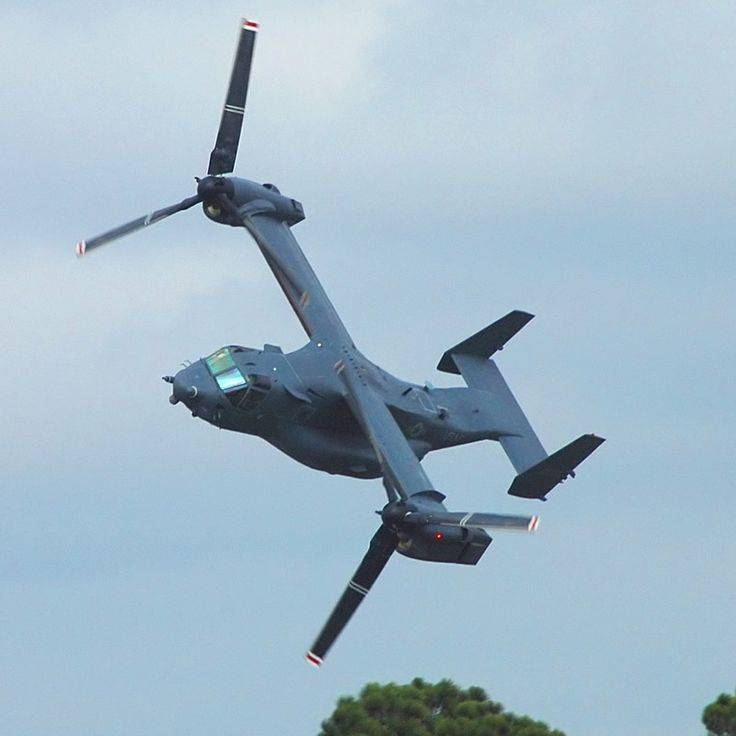
In general, for an experienced pilot, this is a very good machine with additional features that are absent from both the aircraft and the helicopter. But for a beginner, this is a difficult car. Piloting this miracle of technology, of course, you can learn. However, this requires longer training (according to the US Marine Corps curriculum, 180 days are given for pilot training), and the flight requires more pilot attention.
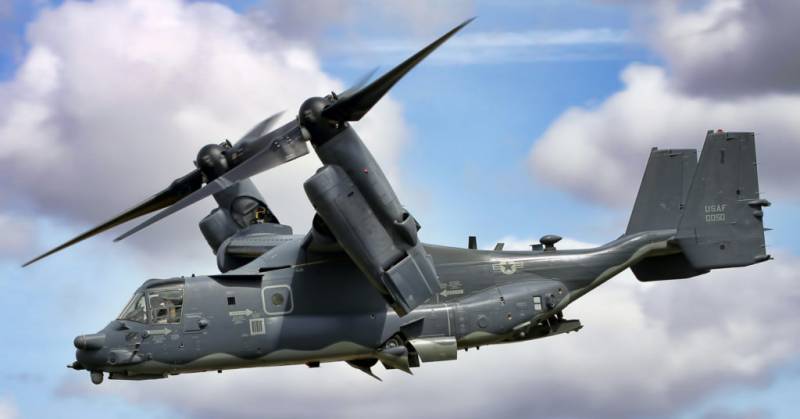
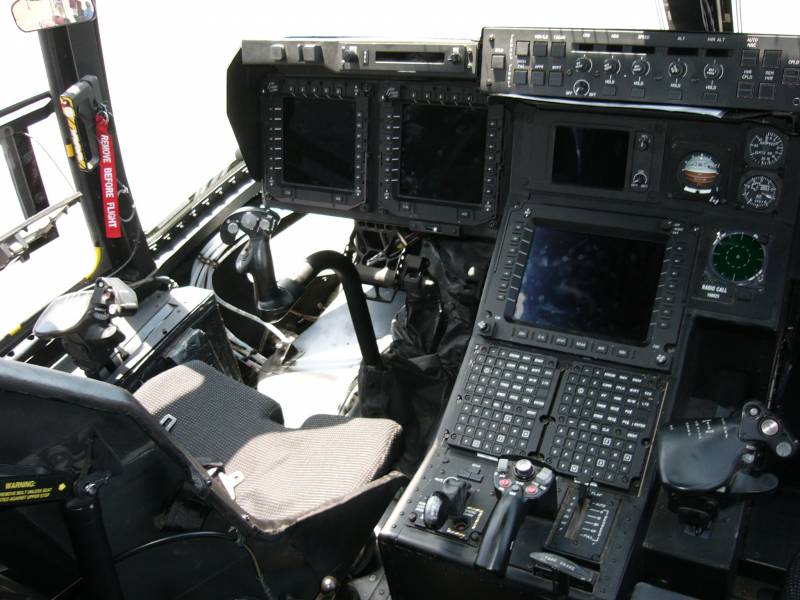
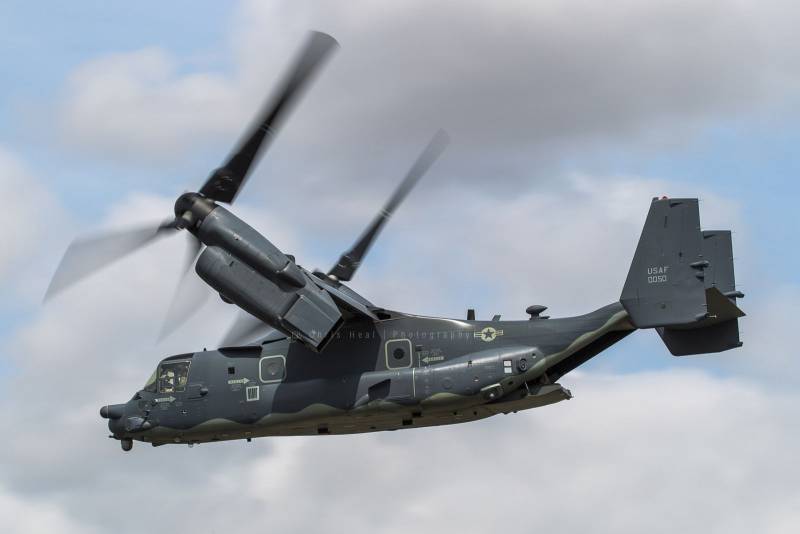
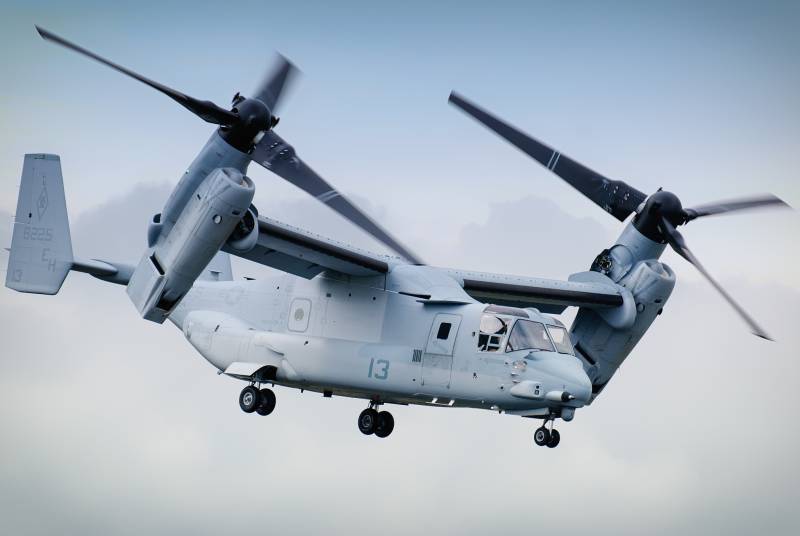
Information